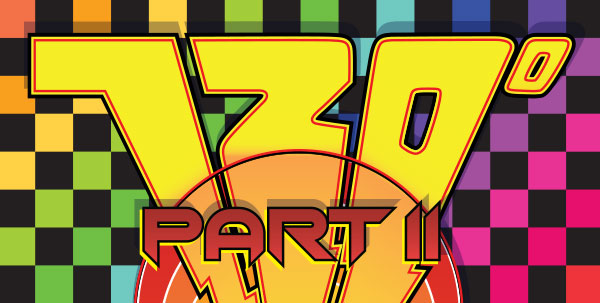
In the previous blog I had touched lightly on the design, and layout of the new Skate City. I said that parts of the city were fenced off, and would be revealed as the character progressed through the game. There would also be parts of the city that remain fenced off, and its up to the player to figure out how to get past the fence. There would be a rail, ledge, or ramp that would be needed to hop the fence. Some of these things would randomly appear once an objective was met. Then there would be places that had no obvious way to get into, but seemed skateable. This is where exploration comes into play.
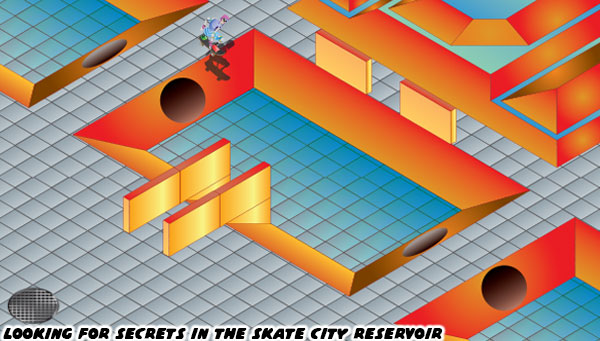
I mentioned that I wouldn’t have tips available by default. I encourage audiences to use their powers of observation to figure out the secrets of Skate City. For example, skaters would notice that there are manhole covers scattered all over the map. At first they simply appear as a street detail, but if a player goes and explores the Skate City reservoir, and water treatment plant then they’d discover there were small tunnels connecting the different banks. On the “blind” side of the camera there would be a manhole that seems to line up with a tunnel opening that is blocked by a wall. If a player goes between the walls they would discover that it is actually a tunnel that leads to another place in the city.
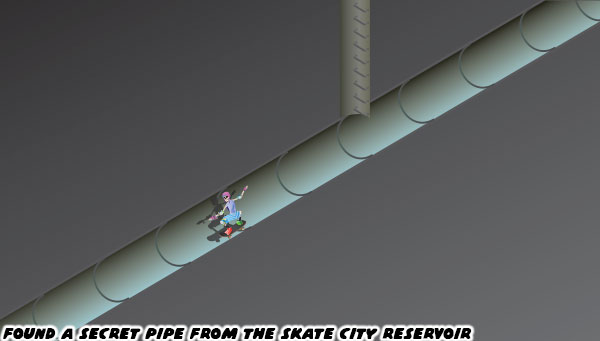
As the player goes down the pipe they would actually see they skate under access tunnels. If a player stops, and jumps while going under the tunnel then their character will pop up in one of the manholes in the city. The player can only come up a manhole, they cannot go back down once at street level. In this way the player learns that they have to seek out the secret entrances scattered throughout the map. Some might be hidden behind a restaurant, or school. Some might even be hidden behind a dumpster. There will always be a manhole nearby to let the players know that a pipe might be in the area. If a player follows a pipe all the way to the end then they might pop up in a Skate City culvert.
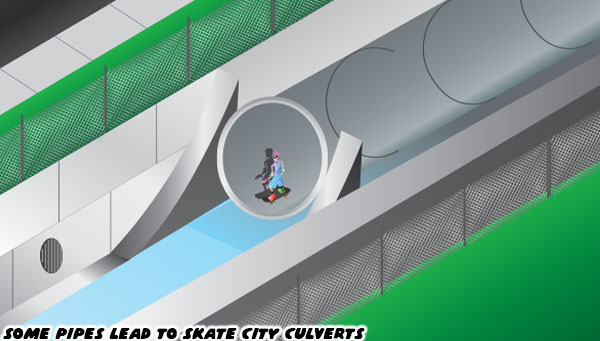
This is where I want players to realize that they can actually “pump” the walls of a pipe in order to gain tremendous speed. This might be the only way to launch up, and out of the culvert. Or if a player backtracks, they would realize that they can actually carve a loop within the pipe. Once the player learns the ability to carve then the next contests they are invited to are park, rather than street contests. If a player becomes really good at carving a full pipe loop then those elements might be included on the next level.
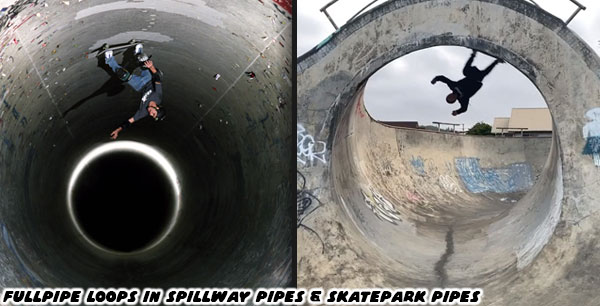
Some of the last places in Skate City that you would be able to unlock/access would be epic in scope. While it would be possible to loop smaller pipes, the monstrous Skate City spillway is impossible to loop, although that shouldn’t discourage you from trying, and learning what sorts of tricks are possible inside of it. This is a great place to earn the experience to make vert, and park tricks easier.
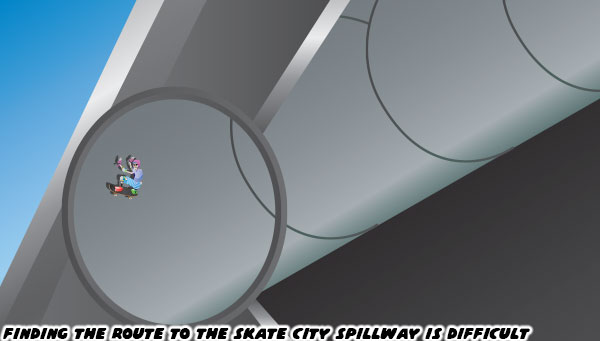
The contests in my 720° would be changed a bit from the original. I didn’t want to steer too far from the format of the early contests, but some of them had little relevance to modern skateboarding. For example I would lose the slalom contest. Believe it or not this is still a format of skating practiced by people the world over. The version of slalom in the original 720° bore little resemblance to the actual sport. So it made little sense to keep it in the game. It wasn’t the only skate contest format that fell in popularity. The same thing could be said of freestyle skating, where people perform difficult flatland routines while trying not to fall. It peaked in the ‘80s, and then went underground. There is still a following behind the format, and even world champion contest, but it wouldn’t necessarily be appreciated in a game of this type.
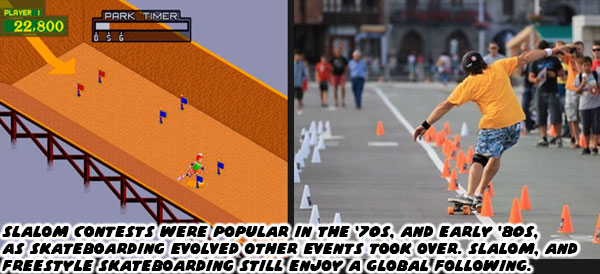
The two most popular formats of skate contests today are Street, and Park. Street contests are based around stairs, rails, and ledges. Contestants focus on grind, and flip tricks under a time limit. The courses in street contests are laid out with obstacles that are roughly the same height as real world handrails, or benches. They reflect the same things that would be seen in daily life. The other format, Park, more closely reflects the layout you might find in a dedicated skatepark. There are transitions, hips, and wedges that can be used to generate tremendous speed, and perform vert-like tricks. They don’t often have the same sort of technical flip tricks that would be seen in street contests. By the same measure street contests are rarely as fast, and explosive as park ones.
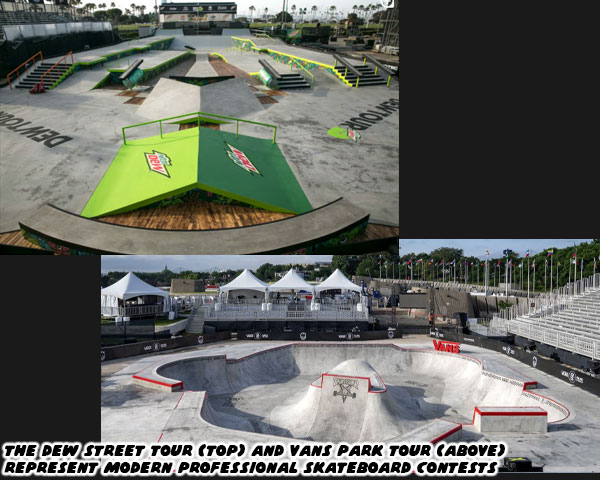
I would replace the slalom contests in the new 720° with street, and park contests. When a player is invited to compete they find our what format it is so they can better prepare. This is when players begin to learn that the size of the course depends on their status, or their skill as a player. The first street, and park contests would take up roughly “one screen” in size. They would be able to easily see the obstacles, and figure out a way to score points within the time limit. As a player advances from Am, to Pro, to Legend then the size, and difficulty of the terrain would change as well.
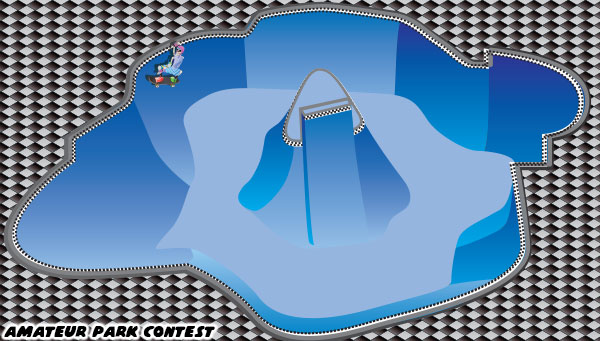
The course for a Legend park contest might be two or three screens in size. It might have a specific feature, such as a full pipe, or cradle that needed to be carved in order to guarantee a victory. The criteria for a skate contest in the game would actually reflect the same thing that judges are looking for in the real world. Actual park, and ramp contests are judged on a number of things. A skater that is capable of putting down clean flips tricks, or grab tricks gets a partial score. But if that’s all they do then they wouldn’t stand a chance of winning. Skaters that have sloppy flip tricks, or sketchy landings might actually do better because they made sure to attempt those tricks going forward, and “fakie” or reverse. They would also earn points for using the entire park. Incorporating grind tricks, carving the cradle, or pipe, as well as spinning frontside, and backside over the entire park would be the best way to win.
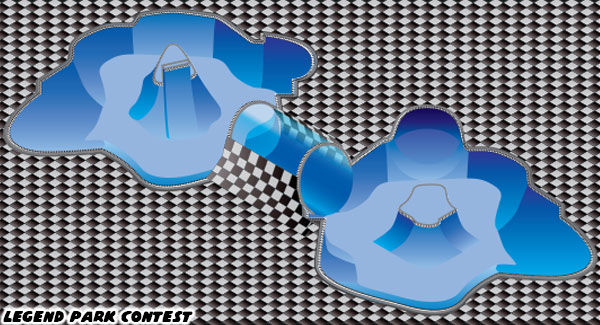
The diversity of tricks, and not solely whether or not a few tricks were pulled cleanly would be heavily favored in the 720° sequel. Believe it or not this was actually the case in the original ramp contests. As I played through the original I noticed that the score for pulling tricks depended on several factors. If I did an aerial, not even necessarily while spinning I earned a few points. But if I carved across the ramp while in the air I was rewarded more points. The further across I went, the more points I earned. The same thing applied the higher I went on an aerial. If I managed to carve across the ramp, while also blasting an air then again my score went higher. Spinning was a score multiplier. You earned more points for each 180 you went, and more points if you went higher, or further across the ramp. It was not uncommon to land 1000 point tricks for performing all three variables in the air.
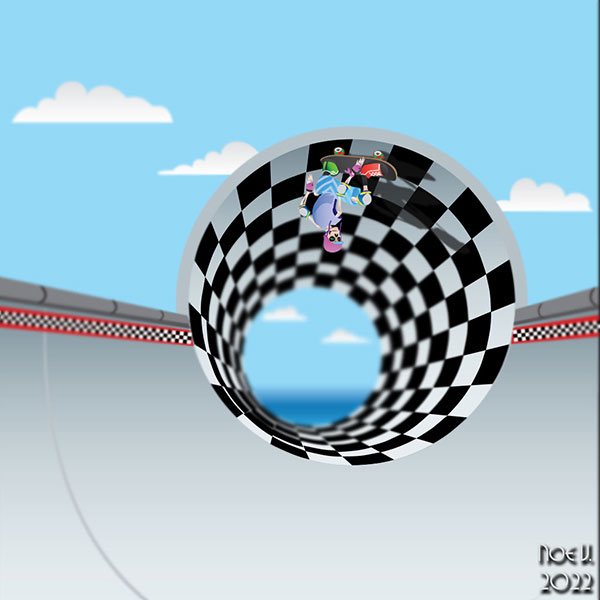
I would take the same approach in 720° sequel contests. Players would be rewarded for the depth of their trick library, how high, and far they went as well. Using grinds, ledge tricks, spinning frontside, and backside would all influence the final score. In the THPS series, and most other skate games you could win a contest by performing the same tricks over, and over. Neversoft did reduce the value of the tricks the more times they were performed during a combo, however that did not mean players would be penalized by the virtual judges.
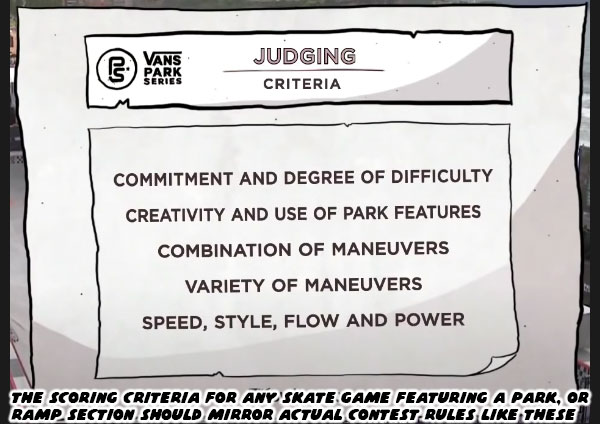
Replacing slalom the slalom contest with park, and street contests was only the beginning of the changes I’d introduce for my sequel. In the next blog entry I’m going to talk about the changes to the iconic ramp contests. I hope to see you back for that. Do you enjoy my sequel ideas so far? I’d like to hear your thoughts on it so far. If you would like to sponsor me please visit my Patreon page and consider donating each month, even as little as $1 would help make better blogs and even podcasts!
No comments:
Post a Comment